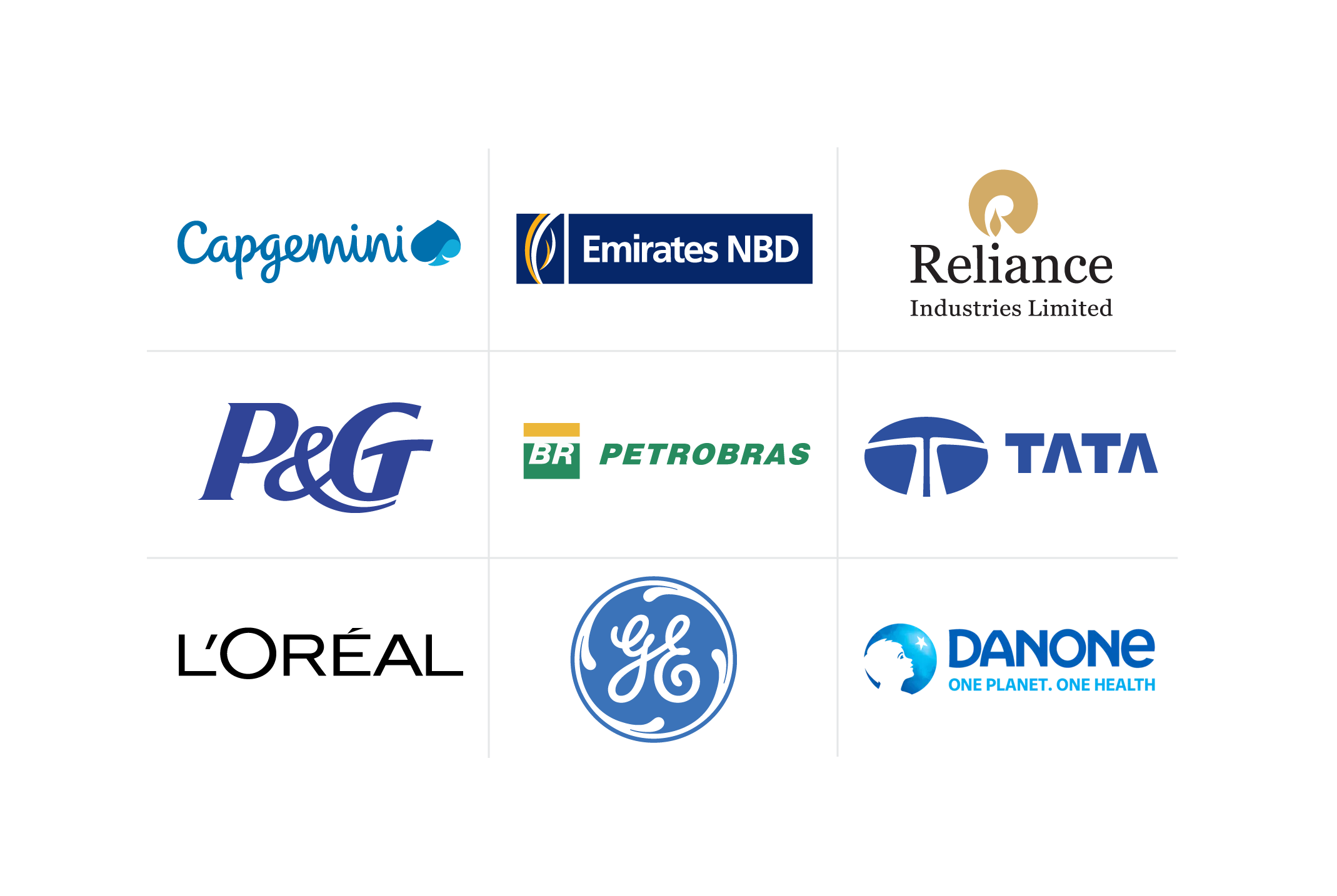The Value of Digital Badges in Corporate Learning
Digital badges are an effective way to support employees by recognizing their learning efforts. Learn more about digital badges, including their benefits, examples, and how to incorporate them into your workplace.
![[Featured Image] A woman works on a laptop, earning a digital badge.](https://d3njjcbhbojbot.cloudfront.net/api/utilities/v1/imageproxy/https://images.ctfassets.net/2pudprfttvy6/7JbF98KqscpJsZIXJcRfzy/fde62f9d1d62f63f380d795125f57222/GettyImages-1063295912.jpg?w=1500&h=680&q=60&fit=fill&f=faces&fm=jpg&fl=progressive&auto=format%2Ccompress&dpr=1&w=1000)
Employees want opportunities to develop their skills further, and employers want to help create enthusiasm in the learning process. Digital badges are one method that helps address both of these goals by connecting learning to career advancement. Offering digital badges is an effective way to invest in employee development and recognition while creating a positive, learning-focused work culture [1].
Read on to learn more about how digital badges contribute to identifying, developing, and retaining skills among your workforce.
Understanding digital badges in the corporate landscape
Traditionally, employees earn physical credentials, such as certificates, to demonstrate expertise or the completion of specific types of training. Digital badges follow this tradition by providing employees with a visual, such as a banner or icon, that shows this same accomplishment in a digital landscape. Digital badges are displayable on social media profiles or websites and highlight your achievements to potential employers. These badges are easily verified, making it much simpler for employers or recruiters to learn about an employee’s skill set quickly.
Defining digital badges
Digital badges are images that act as a credential to demonstrate an employee’s expertise or completion of a specific training or certification. These badges often include verifiable metadata about the organization that awarded them and how long they are valid. Digital badges help to encourage skill development, celebrate accomplishments, and ensure credibility.
The role of digital badges in employee development
Digital badges play an important role in employee development. They provide an effective way for employees to demonstrate their accomplishments and skills. Employees become incentivized to pursue training because the badges help them stand out in their field and attract potential job advancement opportunities. Digital credentialing helps employers develop and retain talent by providing a system that encourages employees to specialize in their roles.
Key components of digital badges for corporate learning
Choosing the right components for your digital badge program influences its effectiveness and impact on your company’s learning and development programs. The key components of digital badges for corporate learning include the following:
Metadata: The specific information included within a digital badge, such as the issuer, any badge-earning criteria, and links to both the issuer and the earner’s professional profiles
Visual design: Eye-catching images, fonts, and copy that establish a clear brand and connection to the issuing company
Reporting: Dashboards and metrics that offer insight into your badge program's adoption, growth, and success rates
Digital verification: QR codes and links that provide simple verification of badge completion.
Designing meaningful digital badges
When designing a digital badge, consider why you want to use badges and what you’re hoping to accomplish with a digital badge program. The answers to these questions will influence the types of digital badges you create and how much value your employees receive from pursuing the badges. Some factors of a meaningful digital badge design include:
Digital badge pathways
Digital badge pathways are how a learner earns badges. They tend to follow three types: standalone, descriptive, or prescriptive. Standalone badges don’t typically connect to other badges. Descriptive badges are earned by a learner self-selecting a training path, either linear or not. Prescriptive badges follow a set sequence.
Each of these pathways influences the design of the corresponding badges. For example, since prescriptive badges follow a learning sequence, each badge should have a related design that becomes more complex as you move through the pathway.
Metadata
Including the right information in the metadata, such as the credential issuer or criteria for earning the badge, allows an employer to verify the badge or skills easily.
Unique design attributes
Animations, eye-catching text, and strong branding elements help a digital badge stand out when shared and forge a strong link to the company issuing the badge.
Types of digital badges suitable for corporate learning
You can use digital badges to represent any accomplishment as long as the badge showcases relevant information. In a corporate setting, some of the more popular types of digital badges include:
Skill badges: Earned through demonstrated skills, such as within a project
Knowledge badges: Earned through completion of a knowledge assessment
Achievement badges: Earned through reaching specific milestones or goals

Implementing digital badges in corporate training programs
Implementing digital badges into your corporate training programs requires the participation of a cross-functional team that helps build the framework, design the badges, and launch the platform for your staff to access.
When implementing digital badges into your workplace, you’ll first create a list of desired badges, including which skills, knowledge, or milestones you want to highlight and what metadata you want to include. Then, you’ll decide whether to bring in a badge company or build your program in-house. Once you’ve made key decisions, sharing information about the badging process with your employees and encouraging them to participate is essential.
Technology and tools for digital badges
Many companies hire a digital badge company to create, implement, and manage their digital badge program. Others build their digital badge program from scratch and implement it in-house. Credential management systems are in the middle, offering badge templates and analytics dashboards as tools for an in-house program.
Choosing the right tools and technology for your business depends on how much you’re willing to spend on a digital badge program and what types of features and support you’re expecting to have access to. Many companies offer demos to let you try their offerings before committing to a platform.
Strategies for successful badge integration
To successfully integrate digital badges into your corporate learning, ensure you know why you want to add badges. Ensuring the badges are meaningful and offer value to your employees will help them buy into the program and participate in the learning and development opportunities you offer. You can accomplish this by communicating to your staff how these badges validate their hard work and offer opportunities for advancement based on their expertise.
Benefits and impact of digital badges on the workplace
Digital badges in the workplace affect both employees and employers. With digital badges, businesses demonstrate investment in their employees’ careers and skill sets, while employees receive recognition for their hard work internally and externally.
Recognizing employee achievement
Employees tend to be more satisfied in their roles when they feel recognized. Digital badges help motivate employees to complete courses by celebrating their achievements. These badges also offer long-term benefits for employees by showcasing new skills that further their brands and careers [2].
Motivating employee skill development by fostering engagement
Employers who use digital badges tend to find that their employees are more likely to complete training and proactively build skills needed to meet changing market demands. Badges often provide gamification, introducing fun and spirited competition into the learning process. This motivates employees to participate more actively in their training programs, increasing participation rates and boosting learning and development overall.
Getting started with Coursera
Digital badges effectively celebrate employees’ achievements while motivating them to participate in learning and development. On Coursera, learners earn a Coursera Badge by completing certain learning paths in their organization’s learning program. Coursera Badges follow the industry-recognized standards for Open Badges, making them verifiable by schools or employers you share them with. Open Badges use a special digital format to show verifiable proof of your learning accomplishments.
With Coursera for Business, you can train teams across your organization in the skills that matter most in today’s digital economy. Your employees will gain access to content from 350+ leading universities and industry partners, where they can build real-world experience with innovative skills, tools, and technologies while earning globally recognized credentials. Our customizable, scalable learning solutions balance workplace and technical skills training in diverse formats, from video clips to guided projects and Professional Certificates. Accelerate your digital transformation and equip employees to drive growth with Coursera.
Article sources
Forbes. “How Digital Badges Motivate And Engage Learners, https://www.forbes.com/sites/kevinkruse/2022/06/13/how-digital-badges-motivate-and-engage-learners/.” Accessed June 25, 2025.
This content has been made available for informational purposes only. Learners are advised to conduct additional research to ensure that courses and other credentials pursued meet their personal, professional, and financial goals.

